
Charles Walter Stenholm was an American businessman and Democratic Party politician from a rural district of the state of Texas. After establishing himself as owner-operator of a large cotton farm, he entered politics and was elected to Congress in his first run for office. Stenholm was a Democratic Party member of the United States House of Representatives for 13 terms, representing Texas's 17th congressional district from 1979 to 2005.
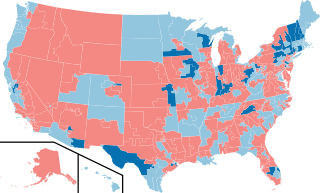
The 2006 United States House of Representatives elections were held on November 7, 2006, to elect members to the United States House of Representatives. It took place in the middle of President George W. Bush's second term in office. All 435 seats of the House were up for election. Those elected served in the 110th United States Congress from January 3, 2007, until January 3, 2009. The incumbent majority party, the Republicans, had won majorities in the House consecutively since 1994, and were defeated by the Democrats who won a majority in the chamber, ending 12 years of Republican control in the House.

The 2003 Texas redistricting was a controversial intercensus state plan that defined new congressional districts. In the 2004 elections, this redistricting supported the Republicans taking a majority of Texas's federal House seats for the first time since Reconstruction. Democrats in both houses of the Texas Legislature staged walkouts, unsuccessfully trying to prevent the changes. Opponents challenged the plan in three suits, combined when the case went to the United States Supreme Court in League of United Latin American Citizens v. Perry (2006).

Texas's 22nd congressional district of the United States House of Representatives covers a largely suburban southwestern portion of the Greater Houston metropolitan area. The district includes most of Fort Bend County, including most of the cities of Sugar Land, Rosenberg, Needville and the county seat of Richmond as well as the county's share of the largely unincorporated Greater Katy area west of Houston. In addition, the district also contains portions of northern Brazoria County, including most of Pearland and Alvin and all of Wharton and Matagorda counties, as well as a small portion of western Harris County centered on most of that county's share of the Greater Katy area.
Louisiana's 2nd congressional district contains nearly all of the city of New Orleans and stretches west and north to Baton Rouge. The district is currently represented by Democrat Troy Carter. With a Cook Partisan Voting Index rating of D+25, it is the only Democratic district in Louisiana.

The South Carolina Republican Party (SCGOP) is the state affiliate of the national Republican Party in South Carolina. It is one of two major political parties in the state, along with the South Carolina Democratic Party, and is the dominant party. Incumbent governor Henry McMaster, as well as senators Tim Scott and Lindsey Graham, are members of the Republican party. Graham has served since January 3, 2003, having been elected in 2002 and re-elected in 2008, 2014, and 2020; Tim Scott was appointed in 2013 by then-governor Nikki Haley, who is also a Republican.

The politics of Louisiana involve political parties, laws and the state constitution, and the many other groups that influence the governance of the state. The state was a one-party Deep South state dominated by the Democratic Party from the end of Reconstruction to the 1960s, forming the backbone of the "Solid South." This was due to the near-total disenfranchisement of the state's large African-American population during this time, who mostly voted Republican. The Civil Rights era turned the state into a competitive one on the federal level, as it voted for the nationwide winner in every election between 1972 and 2004. It remained Democratic on the state and local level until the turn of the 21st century, allowing Republicans to win control of the state legislature and every statewide office in 2011. Republicans won a United States Senate seat for Louisiana in the election of 2004, for the first time since 1876. Republicans captured both seats in the election of 2014 for the first time since 1872. In the election of 2008, the state voted for a losing presidential candidate for the first time since 1968. Democrats won less than 40% of the presidential popular vote in the state in the elections of 2016 and 2020.
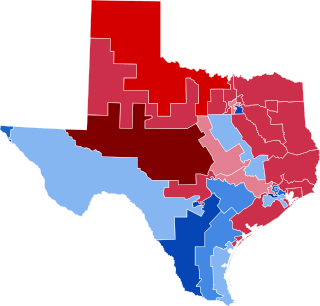
The 2006 United States House of Representatives elections in Texas were held on November 7, 2006, to determine the 32 U.S. representatives from the state of Texas, one from each of the state's 32 congressional districts. These elections coincided with the 2006 midterm elections, which included a gubernatorial election and an election to the U.S. Senate.

The politics of Oklahoma exists in a framework of a presidential republic modeled after the United States. The governor of Oklahoma is both head of state and head of government, and of a pluriform two-party system. Executive power is exercised by the governor and the government. Legislative power is vested in the governor and the bicameral Oklahoma Legislature. Judicial power is vested in the judiciary of Oklahoma. The political system is laid out in the 1907 Oklahoma Constitution.

Like most U.S. states, North Carolina is politically dominated by the Democratic and Republican political parties. North Carolina has 14 seats in the U.S. House of Representatives and two seats in the U.S. Senate. North Carolina has voted for the Republican candidate in all but one presidential election since 1980; the one exception was in 2008, when a plurality of North Carolinians voted for Barack Obama. However, since that election, the state has remained closely contested with Republicans winning by no more than four points and obtaining a majority of the vote only in 2012. This stands in contrast to the post-Civil War era, as the state was a strongly Democratic Solid South state from 1880 to 1964, only voting Republican in 1928.
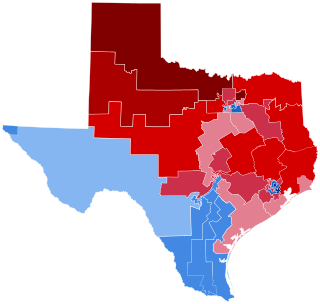
The 2012 United States House of Representatives elections in Texas were held on Tuesday, November 6, 2012, to elect the 36 U.S. representatives from the state of Texas—an increase of four seats in reapportionment following the 2010 United States census. The elections coincided with the elections of other federal and state offices, including a quadrennial presidential election and an election for the U.S. Senate. The primary election had been scheduled to be held on March 6, 2012, with a runoff election on May 22; because of problems arising from redistricting, the primary was postponed to May 29, and the run-off to July 31.

The 1992 United States House of Representatives elections in Texas occurred on November 3, 1992, to elect the members of the state of Texas's delegation to the United States House of Representatives. Texas had thirty seats in the House, apportioned according to the 1990 United States census.
The National Democratic Redistricting Committee (NDRC) is a US organization that focuses on redistricting and is affiliated with the Democratic Party. The organization coordinates campaign strategy, directs fundraising, organizes ballot initiatives and files lawsuits against state redistricting maps. At launch, the organization announced that it intends to support Democratic candidates for local and state offices in order for them to control congressional map drawing in the redistricting cycle following the 2020 United States census.

The 2020 United States redistricting cycle is in progress following the completion of the 2020 United States census. In all fifty states, various bodies are re-drawing state legislative districts. States that are apportioned more than one seat in the United States House of Representatives are also drawing new districts for that legislative body.
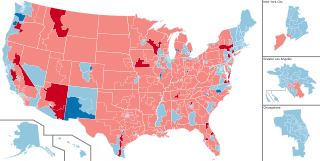
The 2022 United States House of Representatives elections were held on November 8, 2022, as part of the 2022 United States elections during incumbent president Joe Biden's term. Representatives were elected from all 435 U.S. congressional districts across each of the 50 states to serve in the 118th United States Congress, as well as 5 non-voting members of the U.S. House of Representatives from the District of Columbia and four of the five inhabited insular areas. Numerous other federal, state, and local elections, including the 2022 U.S. Senate elections and the 2022 U.S. gubernatorial elections, were also held simultaneously. This was the first election after the 2020 redistricting cycle.
REDMAP is a project of the Republican State Leadership Committee of the United States to increase Republican control of congressional seats as well as state legislatures, largely through determination of electoral district boundaries. The project has made effective use of partisan gerrymandering, by relying on previously unavailable mapping software such as Maptitude to improve the precision with which district lines are strategically drawn. The strategy was focused on swing blue states like Pennsylvania, Ohio, Michigan, North Carolina, and Wisconsin where there was a Democratic majority but which they could swing towards Republican with appropriate redistricting. The project was launched in 2010 and estimated to have cost the Republican party around US$30 million.
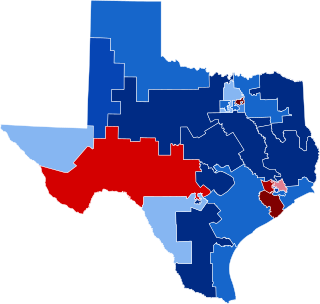
The 1982 United States House of Representatives elections in Texas occurred on November 2, 1982, to elect the members of the state of Texas's delegation to the United States House of Representatives. Texas had twenty-seven seats in the House, up three from the 1970s, apportioned according to the 1980 United States census.

The 2022 United States House of Representatives elections in California were held on November 8, 2022, to elect representatives for the 52 seats in California. This marked the first time in the state's history where it lost a seat.
The 2022 United States House of Representatives elections in Tennessee was held on November 8, 2022, to elect the nine U.S. representatives from the state of Tennessee, one from each of the state's nine congressional districts. The elections coincided with other elections to the House of Representatives, elections to the United States Senate, and various state and local elections.
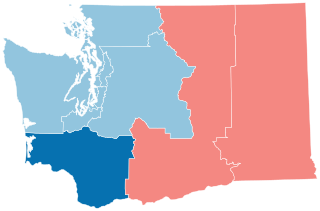
The 2022 United States House of Representatives elections in Washington were held on November 8, 2022, to elect the 10 U.S. representatives from the state of Washington, one from each of the state's 10 congressional districts. The elections coincided with other elections to the House of Representatives, elections to the United States Senate and various state and local elections. Going into this election, the Democratic Party represented seven seats, while the Republican Party represented three seats.

















